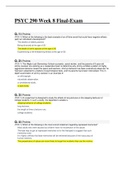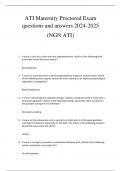Samenvatting
Bondige tentamensamenvatting International Economics (Cijfer: 8)
Korte, zeer adequate en volledige tentamensamenvatting International Economics Radboud Universiteit. Deze samenvatting bevat de fundamentele stof voor het vak, op een compacte manier weergegeven. Als je deze 10 pagina's kent, kun je iedere vraag op het tentamen beantwoorden. Er worden geen woorden ...
[Meer zien]













